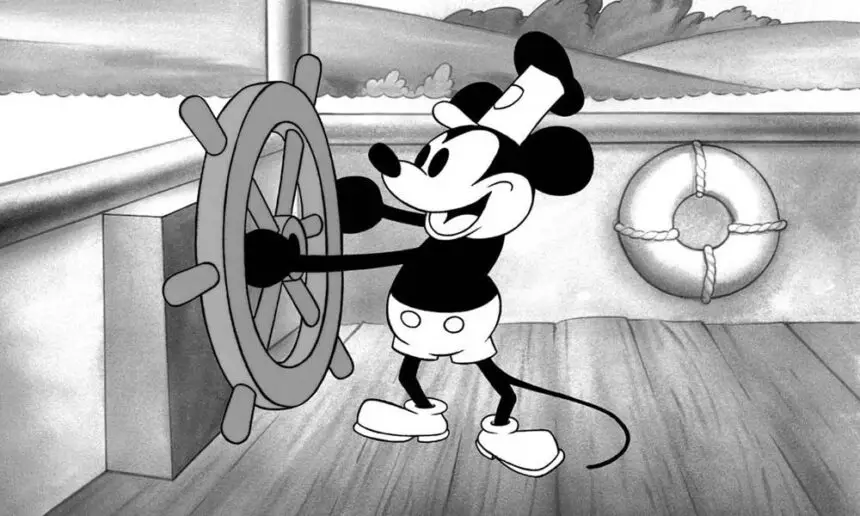Introduction: On January 1st, the original version of Mickey Mouse featured in Disney’s iconic Steamboat Willie officially entered the public domain. This historic move by Disney provides artists and creators with a wealth of new opportunities and creative possibilities. While the 1928 comic debut of the beloved mouse is now freely available, it’s crucial to note that Disney retains copyright and trademark protection for the more modern iterations of Mickey Mouse.
The Unveiling of a Darker Side: In a surprising twist, mere hours after the announcement, a video game surfaced featuring a haunting rendition of everyone’s favorite cartoon character. This development highlights the immediate impact of Disney’s decision, unleashing the creative potential of artists to explore new avenues in art, education, and even gaming.
The newfound freedom to utilize this specific version of Disney’s renowned mouse without seeking permission or facing legal repercussions opens up a vast array of possibilities for creatives. It marks a significant shift, providing artists with the liberty to incorporate this iconic character into various realms, fostering innovation and imaginative expression.
Disney’s Cautionary Note: While Disney liberally embraces this new phase for the original Steamboat Willie Mickey Mouse, the company remains vigilant about the use of subsequent versions of the character. The more modern renditions, tied to copyright laws and safeguarded as a registered trademark, are excluded from the public domain.
A spokesperson from Disney underscores this distinction in a statement, stating, “The modern versions of Mickey will not be affected by the expiration of Steamboat Willie’s copyright, and Mickey will continue to play a prominent role as a global ambassador for The Walt Disney Company in our storytelling, theme park attractions, and products.”
Protecting the Brand: As Disney willingly opens the door to the original Mickey Mouse’s public domain status, it reinforces its commitment to safeguarding its brand and intellectual property. While artists and creators gain the freedom to explore the early rendition of Mickey, Disney is resolute in ensuring that unauthorized use or confusion with more recent iterations is diligently monitored and addressed.
For those looking to incorporate the Steamboat Willie Mickey Mouse into their creative endeavors, a cautious approach is advised. Even though the illustrations from 1928 are now part of the public domain, the modern versions of Mickey Mouse remain the exclusive property of Disney, maintaining their status as a registered trademark and protected by copyright.
Distinguishing Characteristics: Examining the 1928 Mickey Mouse alongside its modern counterparts reveals certain differentiating features. The early version lacks the iconic white gloves, oversized shoes, expressive eyes, and high-pitched voice that characterize later iterations. While there are visual similarities, these distinguishing traits underscore the evolution of the beloved character over the years.
In Disney’s official statement, they emphasize, “Of course, we will continue to protect our rights over the modern versions of Mickey Mouse and other works that remain subject to copyright, and we will work to safeguard against consumer confusion caused by unauthorized uses of Mickey and our other iconic characters.”
Conclusion: The entry of Steamboat Willie Mickey Mouse into the public domain marks a pivotal moment in creative history. As artists and creators navigate the opportunities this presents, Disney remains steadfast in its commitment to preserving the integrity of its brand. The delicate balance between embracing the past and protecting the future sets the stage for a dynamic and innovative era in which the magic of Mickey Mouse continues to captivate audiences worldwide.








